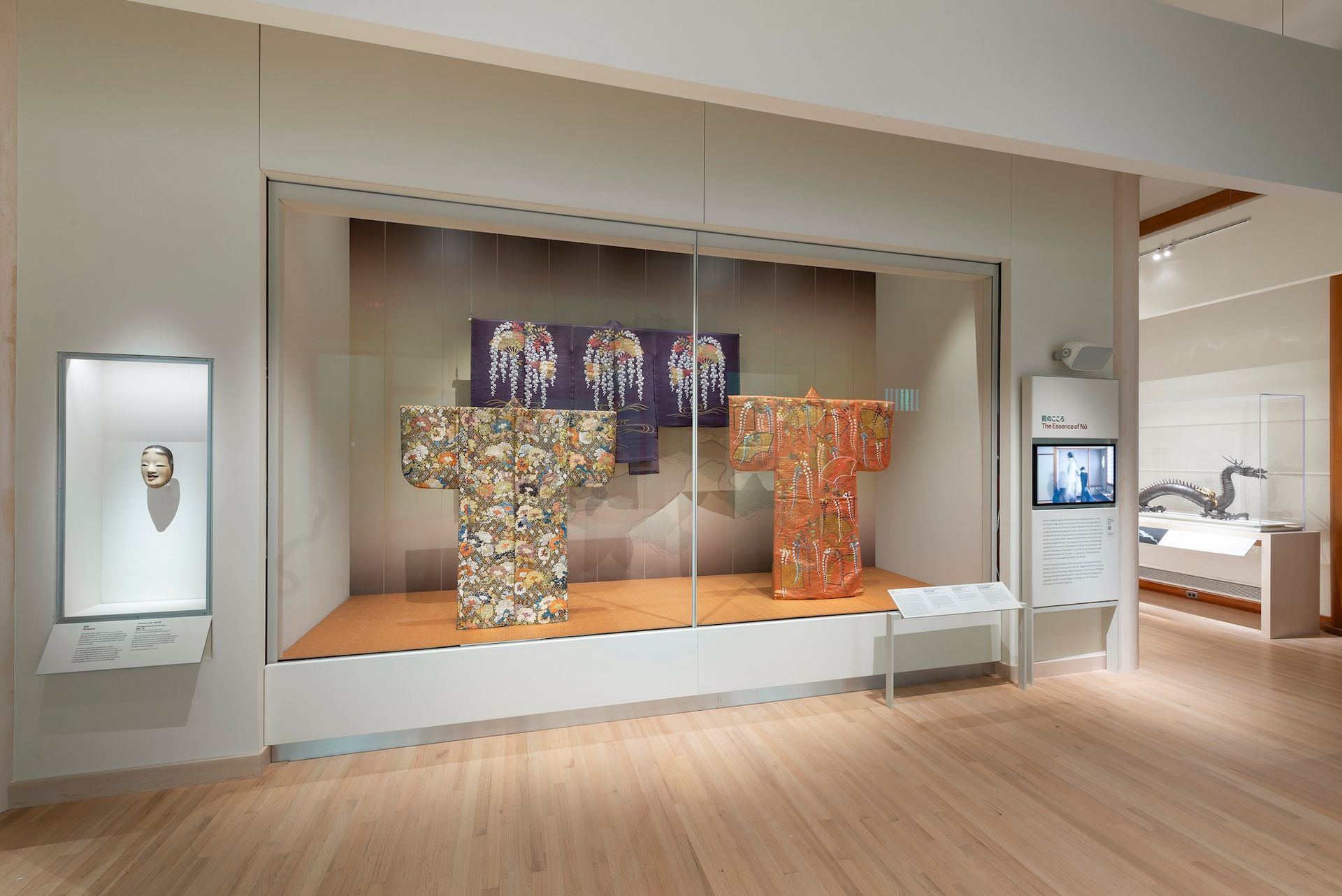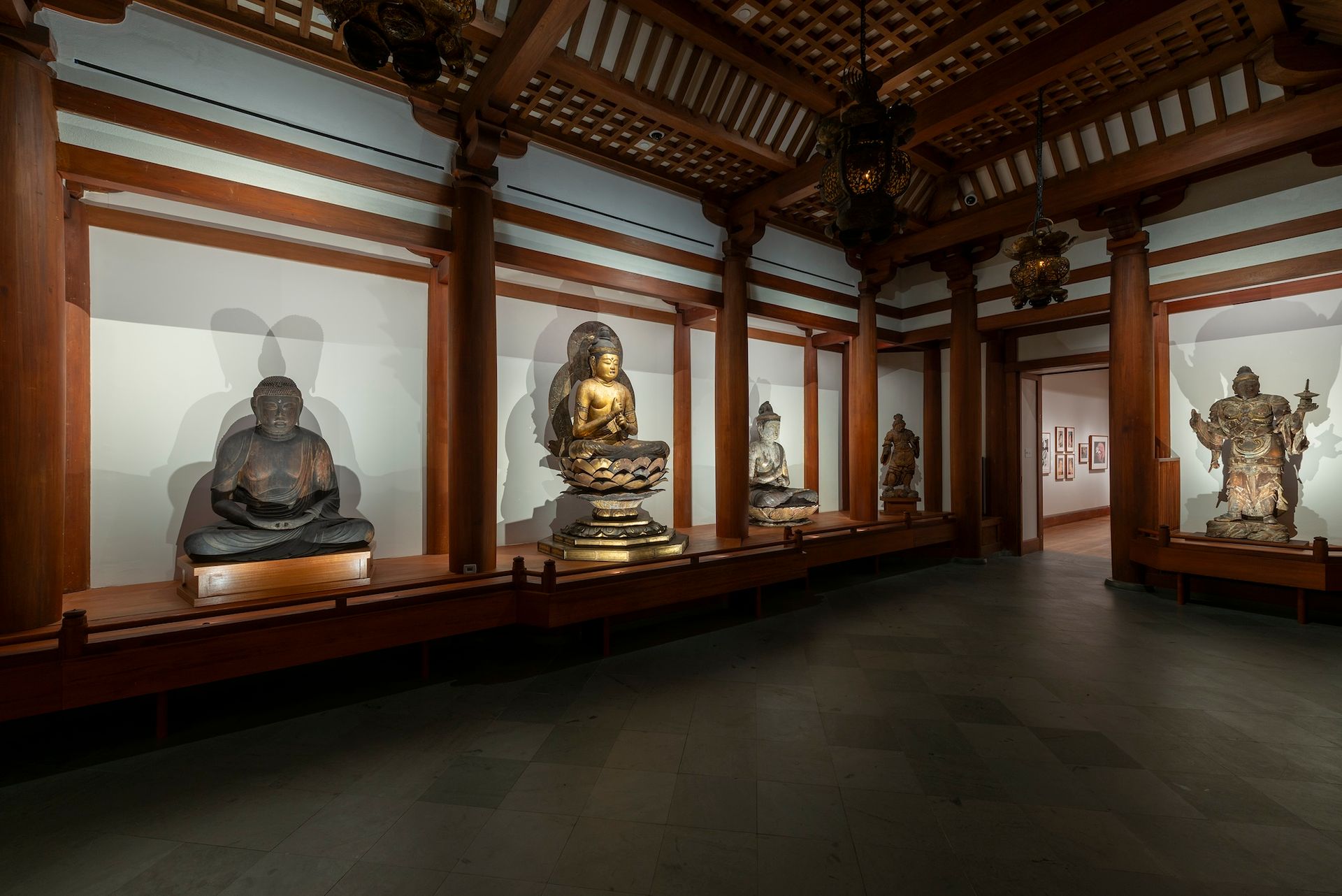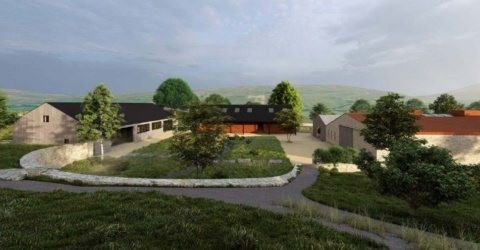Visitors to the newly renovated Japanese art galleries at the Museum of Fine Arts, Boston (MFA) will be anchored in the familiar but drawn to deeper exploration.
The renovation, which opened last weekend, features important climate, technological and aesthetic upgrades to highlight and safeguard the largest and most diverse collection of Japanese art outside of Japan. The new design incorporates the building’s original 1909 Beaux Arts architecture and preserves the beloved Japanese Buddhist Temple Room as the heart of the space. In addition, highly curated displays invite viewers to take a closer look at the artistry and the stories behind individual works.
“Our designers came up with this wonderful scheme, whereby it’s like a ribbon that then brings in the contemporary feel, but within our original framework,” says Anne Nishimura Morse, senior curator of Japanese art at the MFA. “It’s a fresh interpretation of a collection that was acquired in the 19th century.”
The plan for the renovation followed the years-long conservation of seven wooden Japanese Buddha sculptures, and incorporates lessons learned from the Covid-19 pandemic on how best to share the 100,000-piece collection, some of which originally occupied the entire west wing of the MFA. Advances in digital technologies have also helped extend viewership, giving Morse the opportunity to reimagine the visitor experience as both individualised and contextualised.
A deeper connection with select works
The introductory gallery, Art of Japan, is structured to anchor visitors in what they might consider familiar materials, including Nō theatre costumes, swords and carved netsuke. But the lead-in to this space is a contemporary work—Reduction, Self Portrait (2014) by the Kyoto-based, third-generation ceramicist Kondō Takahiro. The sculpture, a likeness of the artist in meditation, explores the aftermath of the 2011 earthquake and Fukushima nuclear disaster. Morse selected the work in part because of how Kondō imbues traditional ceramics with modern, proprietary glazing techniques.

Kondō Takahiro’s Reduction, Self Portrait (2014) in the Art of Japan Gallery, Museum of Fine Arts, Boston © Museum of Fine Arts, Boston
“I really wanted to stress the fact that this is not just traditional [works of art], that there is a continuity between tradition and contemporary. So that’s one reason,” Morse says of including Kondō’s work. “And the second reason is that you’ll see the Temple Room at the other side, in which there’s this central Dainichi (a Buddha), and I thought that this was another sort of bookend.”
The gallery’s featured works are presented in context and will rotate throughout the year. For example, the Nō theatre costumes are hung to showcase the gleaming artistry of the woven materials along with a single mask and contextualised in an adjacent video.

Art of Japan Gallery at the Museum of Fine Arts, Boston © Museum of Fine Arts, Boston
“It’s very understated,” Morse says. “Where I may have put out, in the past, ten robes at one time, we’re now only putting out three. And we are putting only one mask out at a time. Because, again, that’s more in consonance with how these objects are experienced” during a performance. Morse adds that there is a deeper connection offered to visitors through the storytelling of just one object at a time.
This focussed approach continues with a selection of painted works, such as scrolls and screens in the centre of the gallery, and a vignette on the art of tea, which offers a video and stools for quiet discovery. Meanwhile, the miniature art of netsuke, while fascinating on its own, is given rich context by an adjacent display showing the objects’ historical use as fasteners for pouches.
Contemplative spaces
Visitors may wonder what kinds of changes to expect for the beloved Japanese Buddhist Temple Room, which dates to 1909. All seven of its sculptures from the Heian to Kamakura periods (9th to 12th centuries) underwent extensive conservation analysis and treatment beginning in 2018. Many advanced analytical technologies were employed, including an endoscopic procedure by a paediatric neurosurgeon on Bishamonten, the Guardian of the North that revealed an inscription dating to 1909. This and other conservation discoveries are available for visitors to explore via a touchscreen outside the Temple Room.
Loosely based on an eighth-century monastic complex, the Temple Room remains visually unchanged, and the sculptures have been reinstalled on a low, gently lit platform. Visitors will likely be unaware of the essential upgrades to climate control that now safeguard these treasures.

Buddhist Temple Room at the Museum of Fine Arts, Boston © Museum of Fine Arts, Boston
As for the renovated Japanese Print Gallery, it will rotate thematic selections twice per year. And the two Buddhist art galleries, which feature the Kaikei masterpiece Miroku, Bodhisattva of the Future (1189) and other paintings and sculptures, have no visible renovation work and are now reopened.
Morse wants this reintroduction to Japanese art to serve as a building block for the future. “I think you’ll find all of the spaces in these new galleries very contemplative,” she says. “I hope that people, like they have done with the Temple Room, will find that they are in areas where they were drawn into it because they want to look at something and look at it in a different way than they might some of the splashier things we do here at the museum.”
To celebrate the reopening of the Japanese art galleries, a delegation of Buddhist monks from Miidera, one of Japan’s largest temples, conducted a rededication ritual in the Japanese Buddhist Temple Room on 11 May. This was a celebration as well as an acknowledgement of the MFA’s rich history with Miidera, where the founders of the museum’s Japanese collection—Ernest Francisco Fenollosa, William Sturgis Bigelow and Okakura Kakuzō—once studied Tendai Buddhism.

